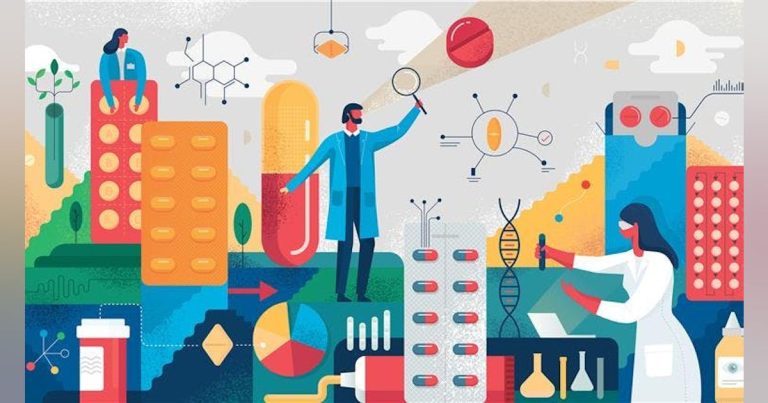Dr. Jonathan An, of the University of Washington School of Dentistry, received FDA approval to test rapamycin in patients with periodontitis. According to An, there is some evidence from transplant patients that rapamycin can help improve oral health. An’s new study will measure changes in the participants’ microbiomes and their biological clocks. A previous study reported the use of rapamycin as an antiaging drug to treat aged mice with periodontitis.7 Rapamycin improved periodontal health after short-term treatment. The study showed that rapamycin could regenerate periodontal bone, reduce gum and periodontal bone destruction, and shift the oral microbiome to a more youthful composition.
Rapamycin and oxidative stress
I have spent much of my career advancing the understanding of oxidative stress and tissue damage caused by periodontal disease, so I was interested to read that rapamycin could prevent bone loss by suppressing oxidative stress. This finding not only reinforces the role of oxidative stress in periodontal pathology, but also suggests a potential therapeutic pathway to mitigate bone loss and promote tissue regeneration in periodontal disease.8
Rapamycin is primarily known for its role in inhibiting the mTOR pathway, which can affect various cellular processes, including oxidative stress. However, the effects of rapamycin on oxidative stress are context dependent. In many cases, rapamycin has been shown to reduce oxidative stress by promoting autophagy, enhancing mitochondrial function, and reducing inflammation, which can lead to reduced production of reactive oxygen species (ROS). This reduction in oxidative stress is part of the reason rapamycin has been studied for its potential antiaging and protective effects. In some specific contexts, where rapamycin affects metabolic pathways differently, it may lead to an increase in oxidative stress, but in general, for aging and tissue preservation, rapamycin is associated with inhibition of oxidative stress.
The mTOR pathway is essential for cell growth and repair, and by targeting this pathway, rapamycin could promote the regeneration of oral tissues after surgery or injury. This has significant potential for patients undergoing dental procedures, such as tooth extractions or implants, where rapid and efficient healing is vital. A careful consideration would be the dosage of rapamycin, as high doses have been shown to interrupt the wound healing process.
Oral cancer applications
Oral cancer is another area where rapamycin shows promise. Oral squamous cell carcinoma (OSCC), the most common type of oral cancer, is often associated with a poor prognosis due to late diagnosis and aggressive progression. The mTOR pathway is frequently activated in OSCC, contributing to tumor growth and survival. Preclinical studies have shown that by inhibiting mTOR, rapamycin can reduce the growth of oral cancer cells and enhance the effects of other anticancer treatments.9 Although more research is needed to confirm these effects in humans, initial results are encouraging and suggest that rapamycin could be incorporated into oral cancer treatment protocols in the future.
Rapamycin is a drug with a wide range of potential applications, extending far beyond its original use as an immunosuppressant. Its ability to inhibit mTOR direction opens up possibilities for treating age-related conditions, cancers, autoimmune diseases, and even oral health issues. While the research is still in its early stages, the potential for rapamycin to revolutionize oral health care is huge. As studies continue to explore its effects on conditions such as periodontitis, oral cancer and tissue regeneration, rapamycin may soon become a staple in the arsenal of treatments available to dentists, offering new hope to patients suffering from these difficult situations.
I would like to thank Dr. Jonathan An for his understanding and review of this article.
Editor’s Note: This article appeared in its November/December 2024 print edition RDH magazine. Dental hygienists in North America are eligible for a free print subscription. Register here.
References
- Samanta D. Surendra Nath Sehgal: pioneer in the discovery of rapamycin. Indian J Cancer. 2017, 54(4): 697-698. doi:10.4103/ijc.IJC_84_18
- Selvarani R, Mohammed S, Richardson A. Effect of rapamycin on aging and age-related diseases – past and future. Geroscience. 2021;43(3):1135-1158. doi:10.1007/s11357-020-00274-1
- Li J, Kim SG, Blenis J. Rapamycin: one drug, many effects. Cell Metab. 2014;19(3):373-379. doi:10.1016/j.cmet.2014.01.001
- Zou Z, Tao T, Li H, et al. mTOR signaling pathway and mTOR inhibitors in cancer: progress and challenges. Cell Biosci. 2020? 10:31. doi:10.1186/s13578-020-00396-1
- Jing F, Yang F, Cui F, et al. Rapamycin alleviates inflammation and muscle weakness while altering Treg/Th17 balance in a rat model of myasthenia gravis. Biosci Rep. 2017;37(4):BSR20170767. doi: 10.1042/BSR20170767
- An JY, Quarles EK, Mekvanich S, et al. Rapamycin treatment attenuates age-related periodontitis in mice. Geroscience. 2017? 39 (4): 457-463. doi:10.1007/s11357-017-9994-6
- An JY, Kerns KA, Ouellette A, et al. Rapamycin rejuvenates oral health in aged mice. Elife. 2020? 9: e54318. doi:10.7554/eLife.54318
- Feng C, Liu Y, Zhang BY, et al. Rapamycin inhibits osteoclastogenesis and prevents LPS-induced alveolar bone loss through suppression of oxidative stress. ACS Omega. 2023;8(23):20739-20754. doi:10.1021/acsomega.3c01289 [Erratum in ACS Omega. 2023;8(44):42005. doi:10.1021/acsomega.3c07440]
- Semlali A, Papadakos S, Contant C, et al. Rapamycin inhibits oral cancer cell growth by promoting oxidative stress and suppressing ERK1/2, NF-κB and beta-catenin pathways. Front Oncol. 2022? 12:873447. doi:10.3389/fonc.2022.873447

